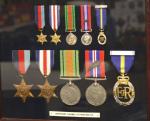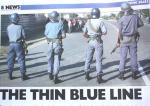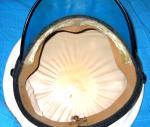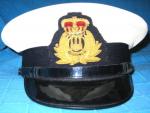-
Posts
13,225 -
Joined
-
Last visited
-
Days Won
22
Content Type
Profiles
Forums
Blogs
Gallery
Events
Store
Everything posted by Mervyn Mitton
-
This attractively mounted group was awarded to Lieutenant Colonel H.R.MOULTON R.E.. The group consists of the : 39/45 Star ; France and Germany Star ; Defence Medal ; War Medal ; Officers Emergency Reserve Decoration. + Mins.. This last award was instituted in 1952 and discontinued in 1967. It covered the WW2 years and of course into Korea and Vietnam. Mostly the Awards were given to the Royal Engineers. Lt.Col. Moulton was also awarded a M.I.D. The lovely case was made by Spink's and can be wall hung - or, stood like a photo frame with a rear bracket.
-
Mike - a great find. Amazing what people 'throw' out - I suppose someone died and a treasured possession, lovingly cleaned and polished is quickly disposed of for cash. 95 years old - with every strap and fitting intact and markings for the Canadian Army - I would have thought at least stg. 1000($1500) to the right person - possibly even more.
-

STH.AFRICA'S 'THIN BLUE LINE'
Mervyn Mitton replied to Mervyn Mitton's topic in Police Forces of the World
These crime statistics have just been released by the South African Police Services - I found them very 'disturbing.' KZN - stands for Kwa-Zulu Natal. Population approx. 14,000,000. NATIONAL - stands for all of South Africa. Population approx. 50,000,000 Figures on right are current - on left for two years ago. -
-

r j beck no.14 periscope
Mervyn Mitton replied to dave8888's topic in Great Britain: Militaria: Badges, Uniforms & Equipment
Hi - Dave. Welcome to GMIC. Go to the sub-forum below this one - second from bottom on Page 2 - Rare British Trench Periscopes. That shows a number of different types and hopefully someone will also tell you more about yours. -

Humidity
Mervyn Mitton replied to Stuart Bates's topic in Preservation & Restoration of Military Artifacts
Hi - Stuart. I have used a de-humidifier for years and as you say it is amazing how much water it extracts. Truncheons - being old wood, dry out and crack so the machine does have a use. The flat also used to have a lot of static electricity - could give a nasty shock. For the dry months I had a machine to add humidity. You can buy a humidity gauge and I try to keep at about 60 %. You may find your cloth covered helmets need to be below this - trial and error. -
I have made a similar post under Brit.& Commonwealth Military, since this seems to be a topic we know very little about. However, with the truncheon and it's association with Police I am making this the main post. I have recently had some photos sent over of items still in my collection and amongst them was this truncheon. The full description is on the white paper around the grip - this I will have to get written out and sent over. However, the words Concentration can be clearly seen at it's top. Basically, the Allies captured thousands of prisoners during the early part of World War One and there was an immediate problem on what to do with them. Britain was at War and had limited resources for guarding large numbers and also food was in short supply. We did hold many prisoners in the UK - Douglas, the capital of the Isle of Man was turned into such a camp - however, Australia and Canada, amongst other Commonwealth Countries stepped-in and offered to supply guarded facilities. The word Concentration Camp has a dreadful connation today , but, 95 years ago it was just a descriptive term. Meaning, as it says, a camp to hold a concentration of prisoners. This truncheon has the Rising Sun of Australia and the word, at the top. The large letters 'GCC' probably stand for 'Government Concentration Camp'. The first set of numbers is prob. for the Camp and the lower numbers, for the Warder or, guard. There must have been a rush on the part of the Aust. Govt. to have the camps built, recruit suitable staff and guards and to provide uniforms and weaponry. The truncheon is of teak and is of the pattern commonly in use in the 1880'/90's - probably in stock. However, the painting is hand done and was probably contracted out. Tony has found a google ref. which shows the camps were in all States of Aust. - with four in NSW and two in West Aust. They were called Concentration Camps in the early days but, this was later to become 'Internment Camps'. More politically correct. There must be other pieces of equipment in Museums - but it seems very little is recorded. Hopefully our members will be able to supply more information - this seem to be to be an important subject and worthy of much deeper research. Tony's google ref. is : www.naa.gov.a.../ww1/index.aspx (go to Brit. Military and direct link from Tony's ref. heading was Help Required)
-
Thankyou for comments. So, it would appear we are right in thinking they were originally called Concentration Camps - later to be Internment Camps, which was obviously more politically correct. Tony, I will add your google ref. to the post I'm going to add on Police. Any more info. from other members ?
-
Only a small point of query on the 90th. badge - but it does leave some serious questions ? I can't see any links with Malta - a Brit. possession at that time. The fight to liberate Greece was against the Turks and we were not directly involved. Many Italians settled in Scotland and in fact, Queen Mary's boyfriend was Italian. Perhaps there is a link with the original founders of the Regt. ?
-
Because this is an Australian item - and was a badge of office - I am showing this truncheon on our Aust. sub-forum. However, because a truncheon is also Police related, it's main post will be under Brit. & Commonwealth Police. Decorated truncheons for Australia are rare - and really only for the 19th. Century. This example is 1st. World War (1914- 1918) and has a most remarkable history. I recently had some photos sent to me of my remaining police collection and this piece came to my notice. There is a small white paper attached to the handgrip - however, I must admit I don't remember everything on it. I will have someone write it out and send over. During WW1 the Allies captured many prisoners-of-war and had great difficulty in providing camps and food for them. Many were interned in the U.K., but many others were sent to friendly countries. Canada and Australia both featured on that list. The camps that were set-up in Aust. were designated Concentration Camps - a word that is filled with horror today - but, 95 years ago it was merely a description. This truncheon - the only one I have ever seen with this legend - has large intertwined letters " GCC " I think this stood for Government Concentation Camp and there must have been a number of them spread throughout the Country. I have no idea of their locations and hopefully an Aust. member will be able to help ? There is also a camp number and an officer's number. Presumably the Australian Govt. had to quickly set-up these camps and then find suitable warders - who must have had a uniform and this issue truncheon. Note the Rising Sun emblem at the top and naming - AUSTRALIA. The truncheon itself is a teak issue of the 1880's/1890/s period - they must have had stock put away. I look forward to comments, observations and perhaps - if we are lucky - some background information on these POW Camps.
-
Robin - I like the plastic display stand - would you have an address for the suppliers ? One final word on the pistol - and I'm sure you know this - being only single shot, they were intended after firing to be held by the barrel and the butt became a bludgeon. They would often - if in close quarters - throw them at the enemy. The bottom picture on your book - I showed the percussion version on this forum a little while ago. Mervyn
-
Robin - you couldn't have a better example to start a collection. Early Wilkinson's are always sought after and you can see the fine workmanship in the grip carving. Obviously, it has had some restoration, but at 200 years old that is to be expected. There would have been a pair originally. Good heavy bore that would stop most things at close range . For display, I always think a pistol looks good with a contemporary powder flask and ball dispenser - a good militaria antiques shop should be able to help. I have thought for some time that old firearms are undervalued - the boxed sets have gone up from hundreds to now, thousands of pounds for good examples - however, in my view, singles are still moderate and a good field for collectors. Mervyn
-
Some rare pieces - you certainly have a very fine collection. I was interested in the 90th - The Perthshire Light Infantry. I don't recall seeing the Fasces shown at the bottom. This of course, was the symbol of authority in ancient Rome and was carried by Lictors in the front of Magistrates and consuls. With the axe it meant that the magistrate had the right to order execution. I presume it was taken - or, awarded as a Battle Honour - can you tell us where and when ?
-

WW2 - GERMAN POLICE DRESS BAYONET
Mervyn Mitton replied to Mervyn Mitton's topic in Swords & Edged Weapons
Joe - thankyou for taking the time and trouble to give accurate info. on this bayonet. To sum-up, am I correct in saying it is a 1929 Prussian Police pattern - officially modified in length and with the shell ornamentation removed from the cross guard ? With regard to the stamped impressions on the cross guard and the scabbard - I don't think they are important. Whenever - and by whomever - they are obviously quite genuine. During wartime quality can easily deteriorate and how do we know that the bayonet wasn't issued to one of the many satellite countries the Germans set-up. I hope we can find some more items for you to tell us about - meanwhile, post some of your other ones. Mervyn -
Will - I am a little disappointed for you that this superb pair has not had more attention from the members. Perhaps it was a week without many viewers - however, I would like to point out to everyone that this is a most rare - and valuable - pair. The VC was only just coming into effect and therefore, the possibility of the DCM being for the equivalent of a VC action is very high. It was the highest award - at that time for an O/R. May I suggest, Will, that you give us the background to a DCM award. Just a thought. I know that I was very impressed with the pair and personally, would love to own them. Mervyn
-
Mike - a very interesting story - an Honorary award but, as you say - the last time one will be seen being worn. I think the expression which sums it up is - 'The Old Order Passeth !" As we all get older we are continually seeing the 'last' of things - I wonder what our present younger generations will remember in 50 years time ?
-
Dan - very often families will remove detail names before selling them. I think they feel ashamed to be selling. Personally, I would strongly advise against trying any restorer - Michael's suggestion of an x-ray is probably the best. The other safe way - if you have any police contacts - is to ask for help from their forensics departments. Please let us know if you establish anything. One little point - if a name or, rank is underlined it usually means it is an abbreviation.











